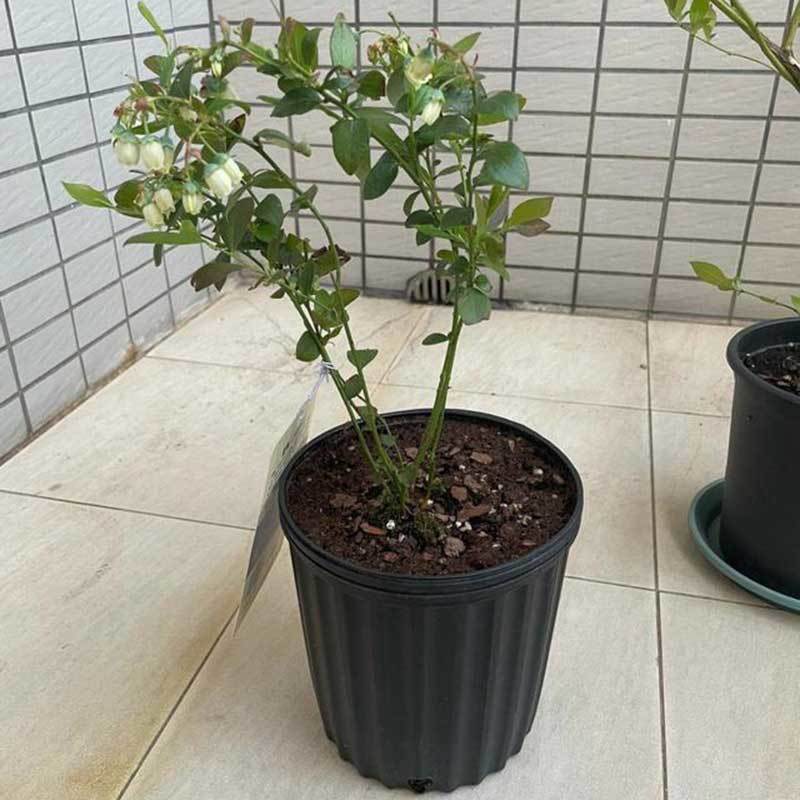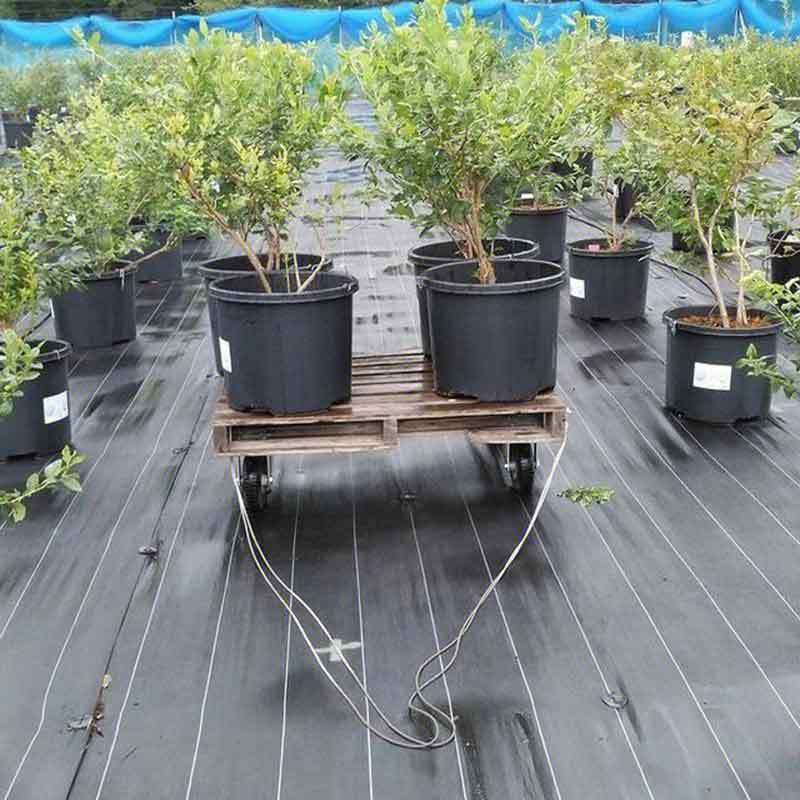A Complete Guide to Growing Blueberries in Colorado
Introduction
Can you grow blueberries in Colorado? Blueberries are a popular and healthy fruit. They contain antioxidants, vitamins and fiber. This comprehensive guide will provide you with all the necessary information to successfully grow blueberries in Colorado. You will have a successful blueberry harvest in no time with the right knowledge.
Understanding Blueberries
Nutritional Value: Blueberries are beloved around the world. Because of their sweet flavor and versatility as a fresh, frozen, or dried fruit. As part of the small fruit family, they also boast numerous health benefits, including providing Vitamin C and fiber along with antioxidants that may reduce inflammation.
Best Blueberry Plants for Colorado: You should consider several factors when selecting the best blueberries to grow in Colorado. The most suitable options for Colorado gardens are hardier bush types with good cold tolerance. For example, the rabbiteye family.
Rabbiteye varieties can survive Colorado winters. For example, Powderblue, Tifblue, or Brightwell. They can produce large fruits with excellent flavor. Some hybrid varieties are also suitable for Colorado and offer a longer harvest season. For example, the Sunshine Blue from UGA.
Site Selection and Preparation
Choosing an Appropriate Location: How much sun does blueberries need? They need at least six hours per day. Good drainage is also critical for blueberry success. They do not do well in soggy conditions. So choose a site that has good air flow and consistent drainage.
Soil and pH Requirements: When planting blueberries in Colorado, it is important to evaluate your garden soil and pH requirements. Blueberries soil pH 4.0-5.5 is best. To determine your soil's pH, you will need to test it with a kit or by having your local cooperative extension office analyze the sample for you.
Add two inches of organic compost or aged manure to sandy soil. This will help hold moisture and the compost will also help lower the soil’s pH. For clay soils, you can use double-digging to loosen the soil and improve drainage. You can mix peat moss or compost into the soil with a depth of 6-8 inches. This will help create a more acidic environment.
Drainage and Acidic Conditions: When growing blueberries in containers in Colorado, consider improving drainage and creating an acidic environment for your plants. Incorporating amendments like sulfur before planting can help create an acidic environment.
Add bark chips or pine needles on top of the soil. This keeps moisture levels consistent and reduces weed growth between rows. Additionally, raised beds are great for growing blueberries. Because they improve drainage and aeration.

How to Grow Blueberries in Colorado?
When to Plant Blueberries in Colorado? The best time to grow blueberry bushes in Colorado is early spring. When the soil has thawed and nighttime temperatures stay above freezing. You should give the plants plenty of time to adjust before any sustained cold weather or freezes occur.
Selecting Healthy Blueberry Plants: You can buy from a nursery or grow blueberry from seed. You can get mature plants if you’re looking for a quick harvest. Because they can produce fruit within the first year. Growing your own blueberries requires more patience. Because it will take up to three years before producing.
How to Plant Blueberries in Colorado? Amend the soil with organic matter before growing blueberries in Colorado. For example, compost and peat moss. This will increase drainage and help retain moisture so your plants stay healthy. Plant them in a raised bed or container. So they get plenty of sun throughout the day.
Proper Spacing: Space out the plants at least four feet apart when planting in the ground. Six inches apart if you are growing blueberry bushes in containers. Arrange the plants in rows. So there is room for air circulation around each plant. Water the plants regularly. Trim away any dead or diseased branches.
Mulching Techniques: Add a layer of mulch around your blueberry plants to retain moisture and suppress weeds. Using organic matter such as straw, hay, or bark chips. This will help reduce weed growth and keep the soil at an even temperature.
How to Care for Blueberries in Colorado?
Watering Requirements: Blueberry plants need an abundance of water during the summer months. Provide adequate moisture by frequent deep watering. You can use soaker hoses or drip irrigation systems. This also helps reduce fungal diseases. You should water blueberries two to three times per week. Sandy soils will require more frequent watering.
Fertilization Techniques: Fertilizing blueberry plants can ensure healthy growth and good yields. You should apply an application of low-nitrogen fertilizer in early spring before the plants begin to flower. This will help promote vegetative growth.
In mid-summer, you can apply higher nitrogen fertilizer to encourage fruiting. A standard 8-8-8 or 10-10-10 fertilizer should be sufficient. It’s important to avoid over fertilizing. Because this can result in excessive vegetative growth. It also reduces fruit production and increases susceptibility to disease.
Pruning Guidelines: Pruning is an important part of blueberry care. You should do it regularly to maintain healthy growth and promote higher yields. For the first two years, prune lightly to encourage bushier growth. Remove dead or damaged branches as needed.
After that, you should prune annually in late winter before new growth begins. This will help encourage fruiting and promote a strong framework for the plant. Overgrown plants can be rejuvenated by carefully removing one third of the oldest branches each year over a three-year period.
Managing Pests and Diseases: The common pests and diseases include spotted wing drosophila, powdery mildew, root rot, and fruit rots. You can use insecticides or fungicides to prevent an infestation. You should keep plants well-maintained with the proper pruning and fertilization techniques.
Inspect plants regularly for signs of disease or infestation. Remove and destroy affected branches immediately. Practice good hygiene by regularly clearing away fallen leaves and debris to protect your plants from harm.
Protecting Blueberry Plants from Frost: In Colorado, blueberries are susceptible to frost damage during spring and fall. Because of their shallow root system. This can cause them to freeze more quickly than other types of plants.
You should cover them with an insulating material during cold nights. For example, burlap or plastic sheeting. You can also use mulch to trap heat and protect against frost damage. Additionally, make sure plants are well-watered during the cold months. This will help them stay healthy and better able to survive freezing temperatures.

Harvesting and Storing Blueberries
Signs for Harvest: When harvesting your blueberries, look carefully at each individual berry before picking it. Ripe blueberries will turn from a greenish hue to a deep purple-blue as they mature, with a light soft powdery bloom on their skin. They should come off the bush easily when gently tugged.
Proper Techniques: Handle blueberries with care during harvest to ensure the best quality. Take a container and lightly brush or scoop off any berries that are ready for picking instead of using your hands. Be careful not to grab too tightly or pull too hard. Because this can bruise and damage the fruit.
Storage Methods: To prolong shelf life, sort out any overripe or damaged berries before packing them into containers. Store them in shallow trays or baskets lined with paper towels. Cover the container with plastic wrap. Blueberries can stay fresh for 10 days in the refrigerator. But you can freeze them to last longer.
Creative Ideas for Using: Making homemade preserves is a great way to use your freshly harvested blueberries or store them for later use. Cannning and jarring techniques allow you to make jams, jellies, pies, cobblers and other delicious treats. You can also dehydrate berries for snacks. For example, dried fruit bars, trail mix, cereal toppings etc.
Troubleshooting Common Challenges
Nutrient Deficiencies: Keep an eye out for signs to identify deficiencies early. For example, yellowing leaves or stunted growth. If you notice any of these symptoms, test your soil pH levels and nutrient content. Then, use fertilizers specifically formulated for blueberries to supplement them accordingly.
Bird Damage: Birds can easily wreak havoc on blueberry crops if left unchecked. Consider setting up a netting system around your plants. This keeps birds away from your berries and also provides some wind protection. You can also install bird spikes or scare devices. Place decoy fruit in your yard may draw them away from the blueberry bushes.
Blueberry Growing Tips for Colorado
Companion Planting: Selecting companion plants for blueberries can deter pests and grow healthy fruits. For example, thyme, oregano, rosemary, lavender, mints and yarrow. These can provide natural pest control and enrich the soil. These herbs will attract pollinators like bees. Cross-pollination can help increase fruit production.
Extending Blueberry Season: Colorado has a short growing season. You can select a mix of different ripening times. For example, early-bearing cultivars like Bluetta or Brunswick; mid-season varieties like Northblue or Bluecrop; late-bearing cultivars like Herbert or Earliblue. This extends the harvest period for several weeks and maximizes your yield.
Conclusion
Growing blueberries in Colorado is a rewarding experience. You can have delicious berries to enjoy every summer with the right growing conditions and careful tending. So start planting blueberries and enjoy the fruits of your labor!


